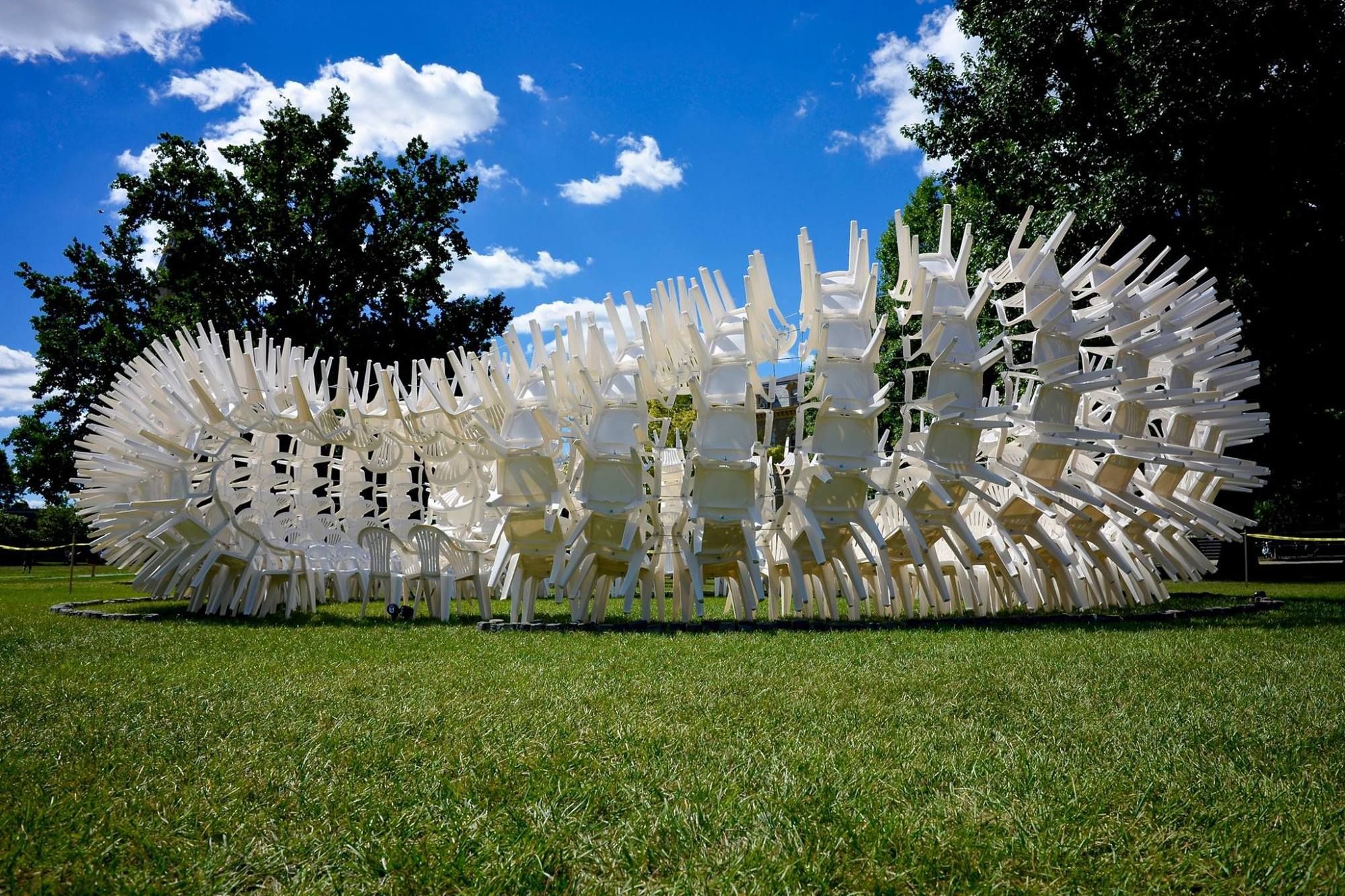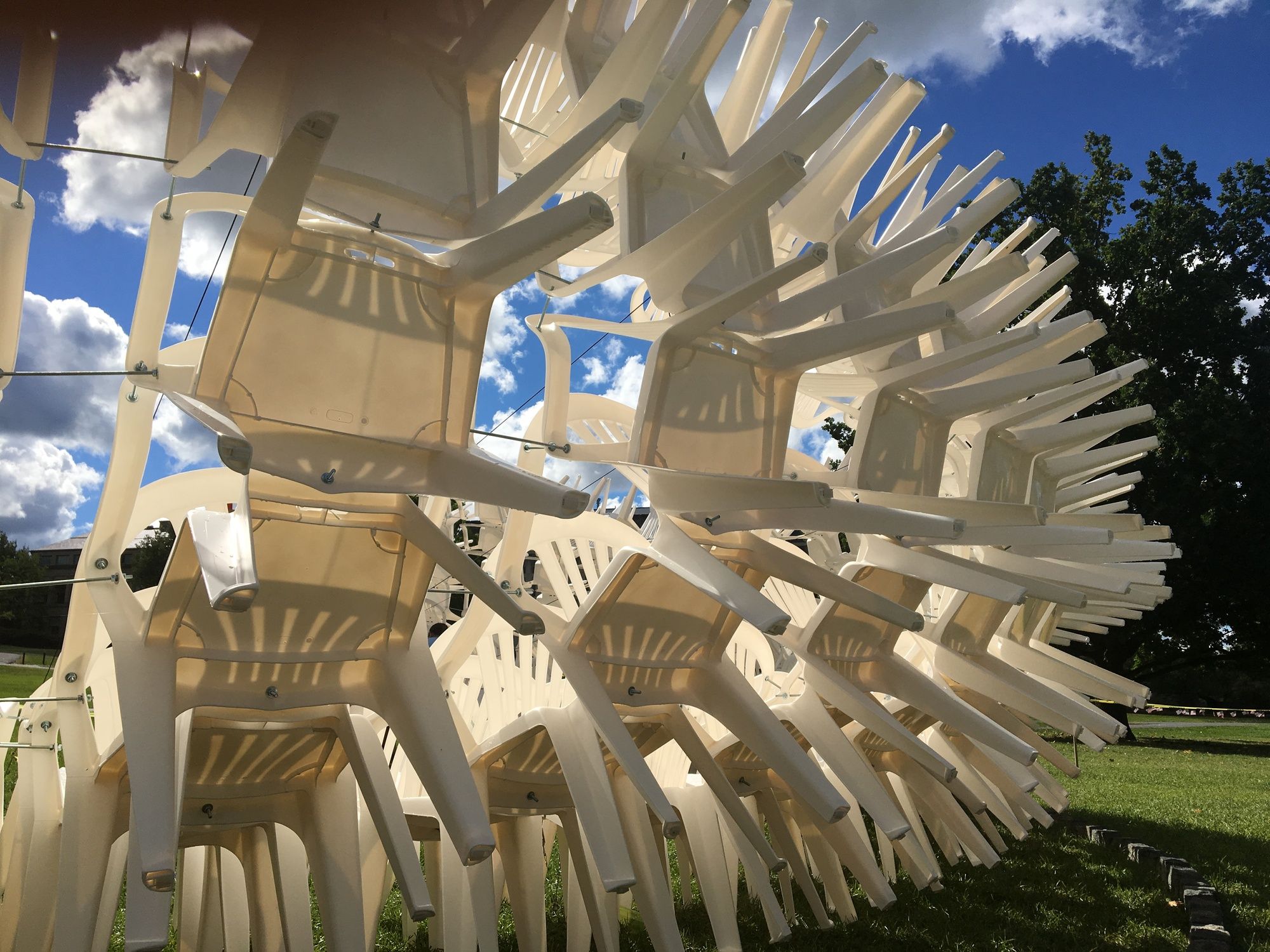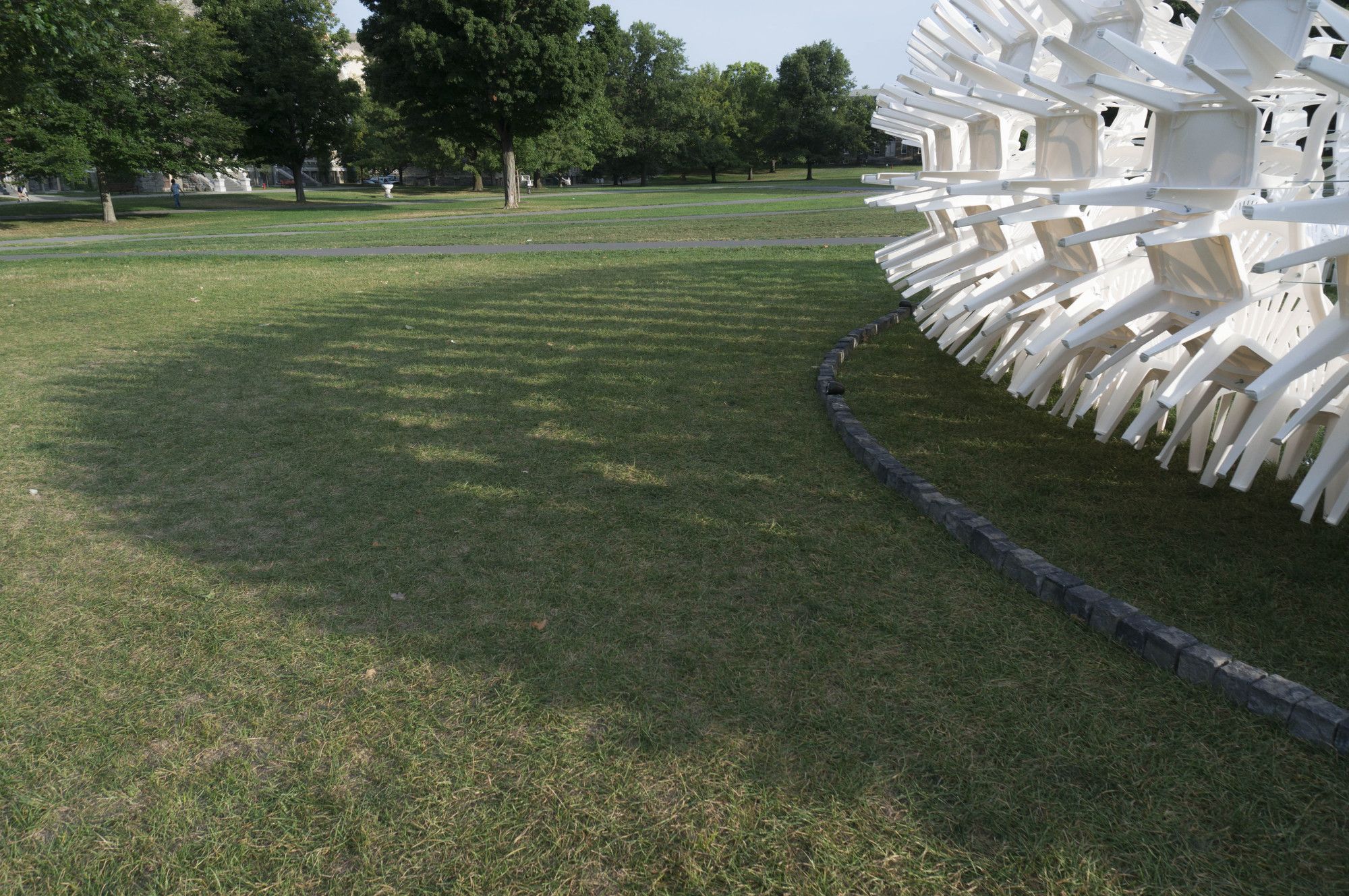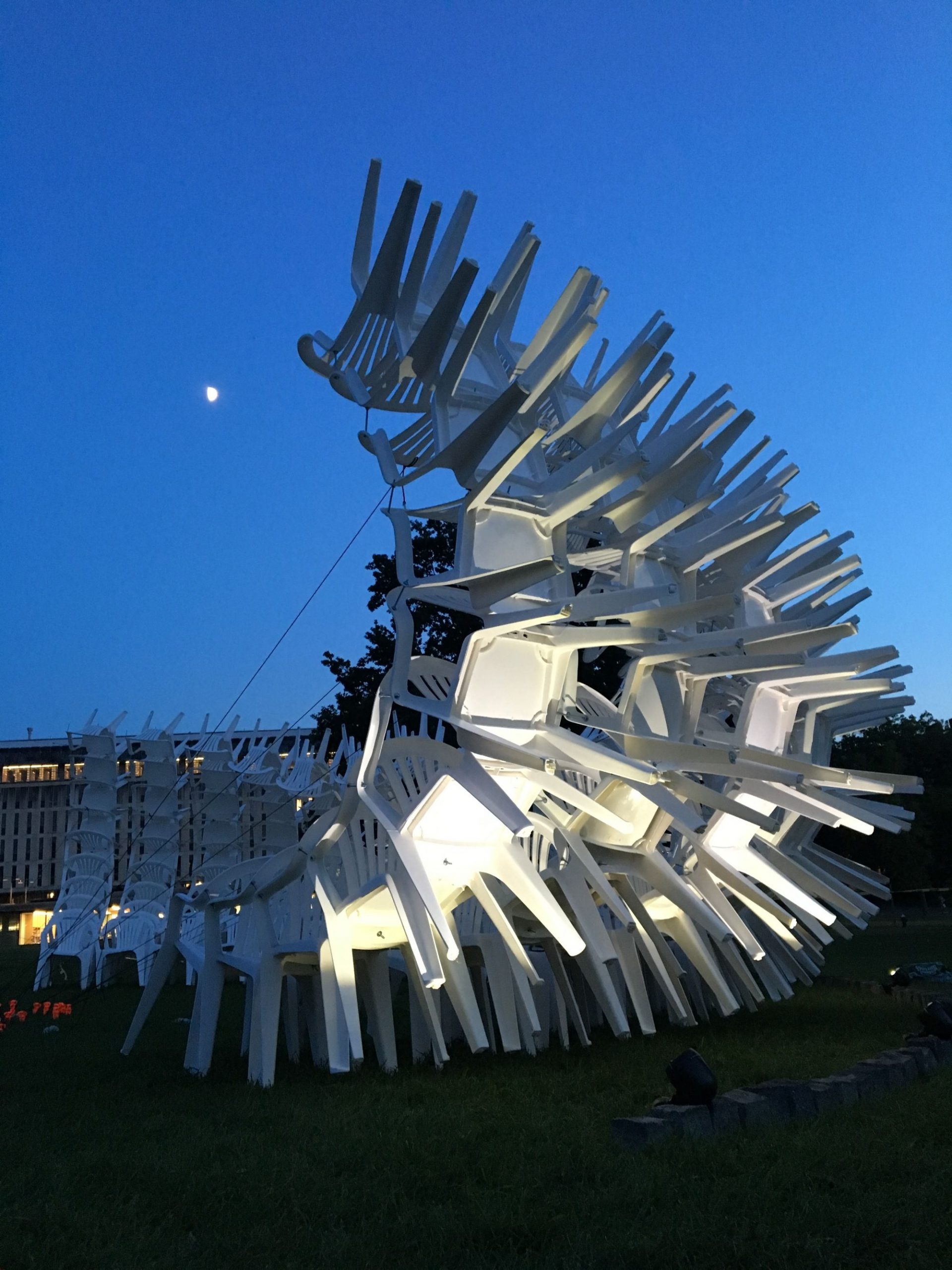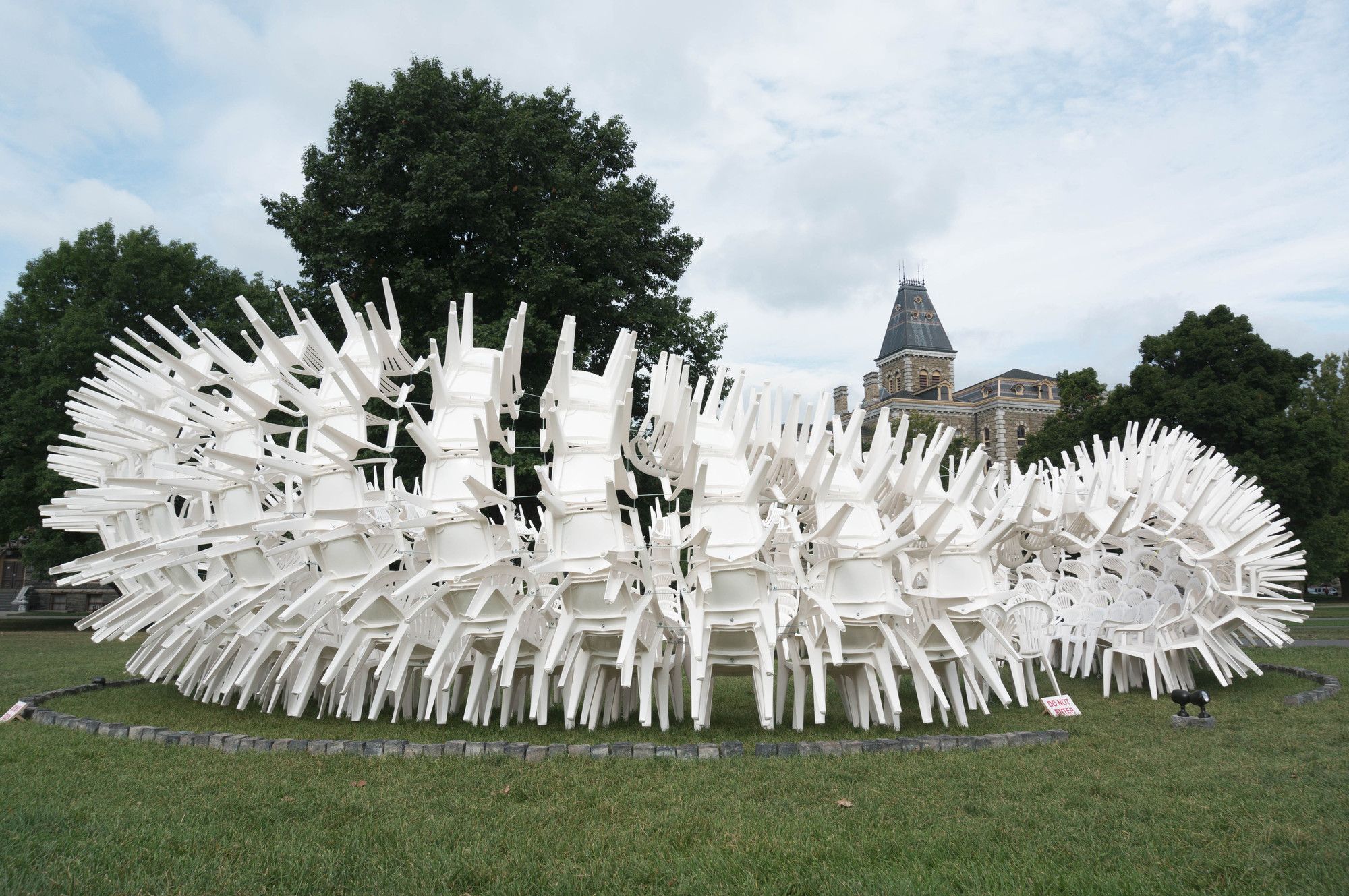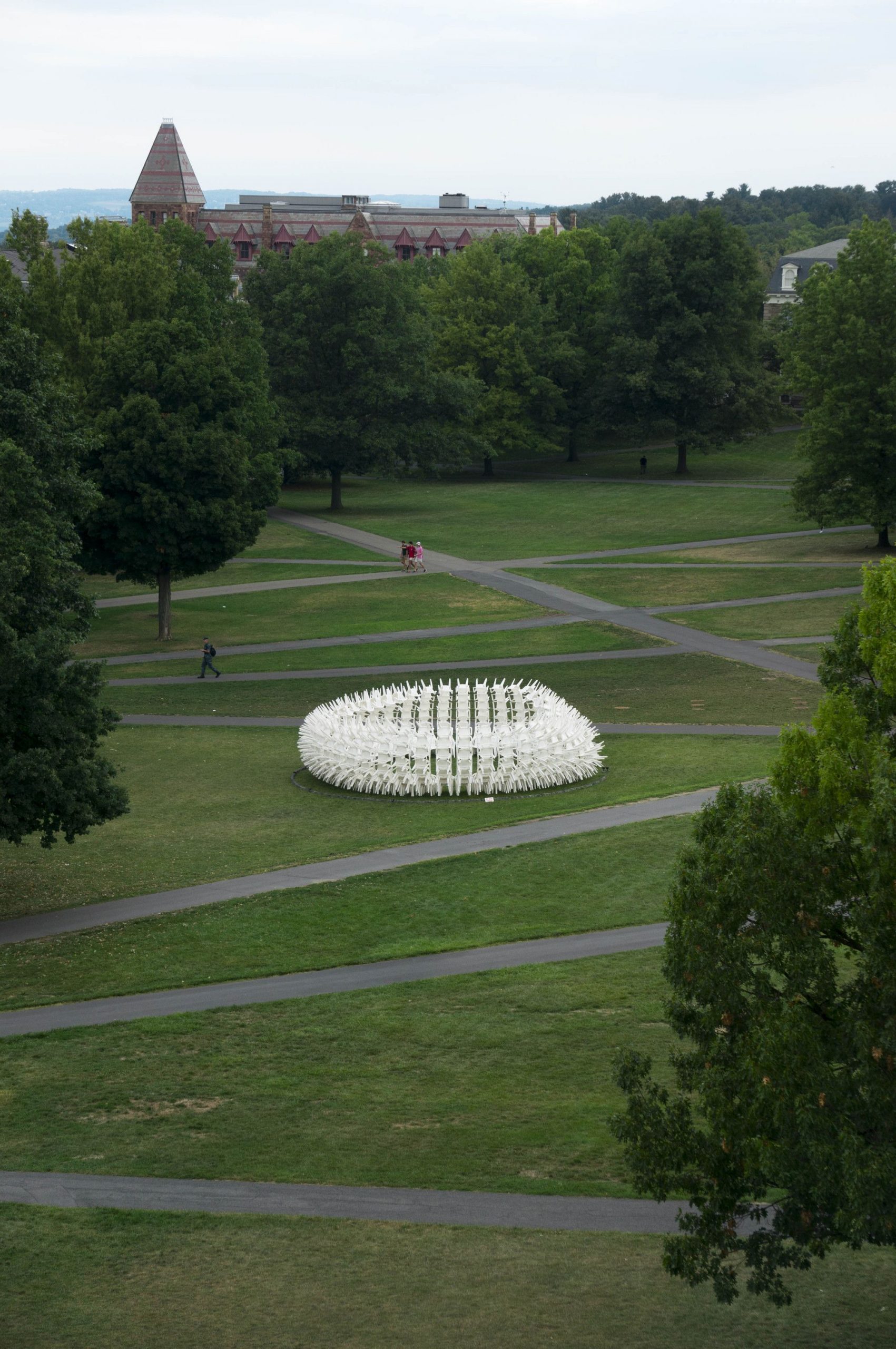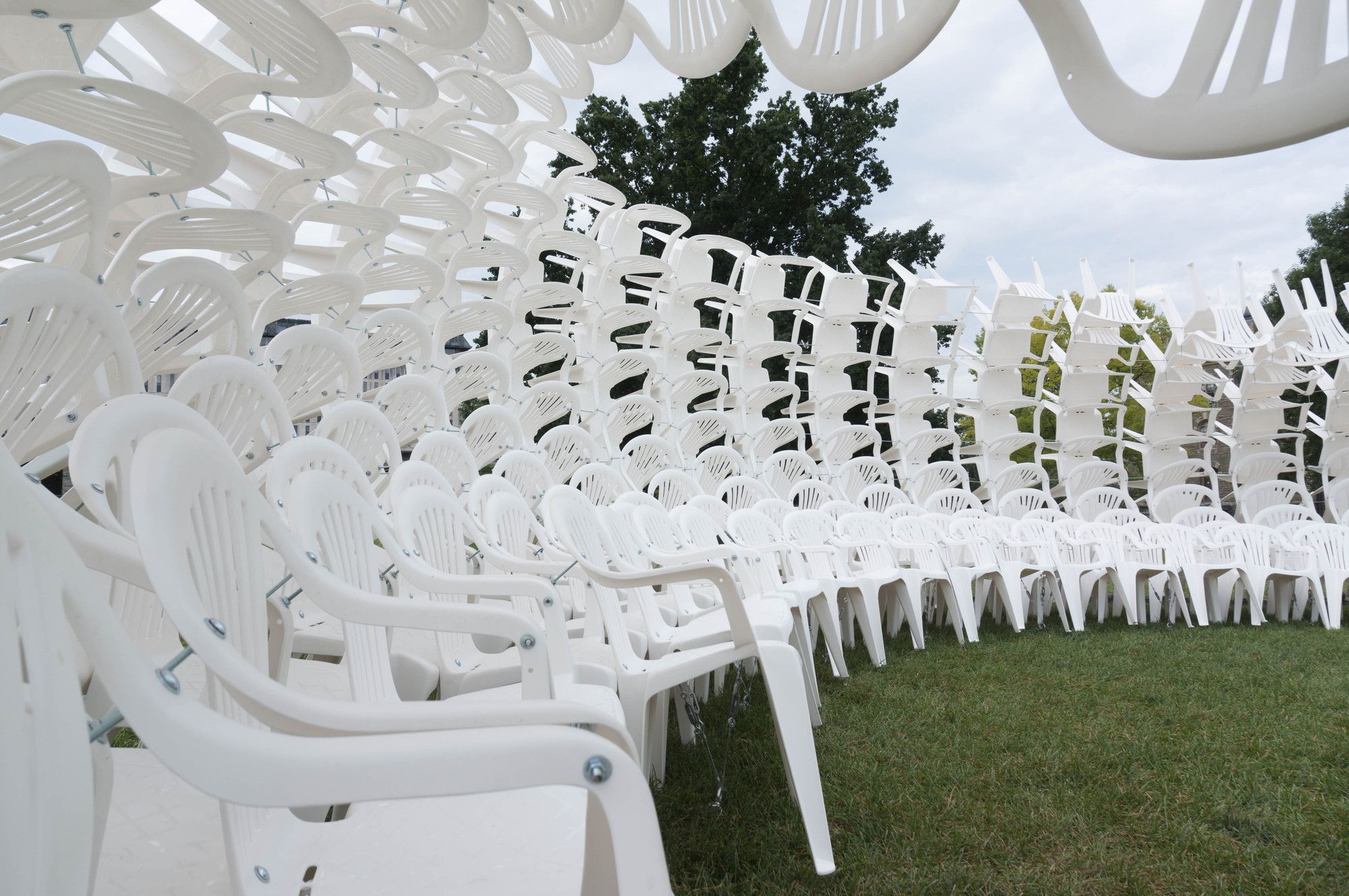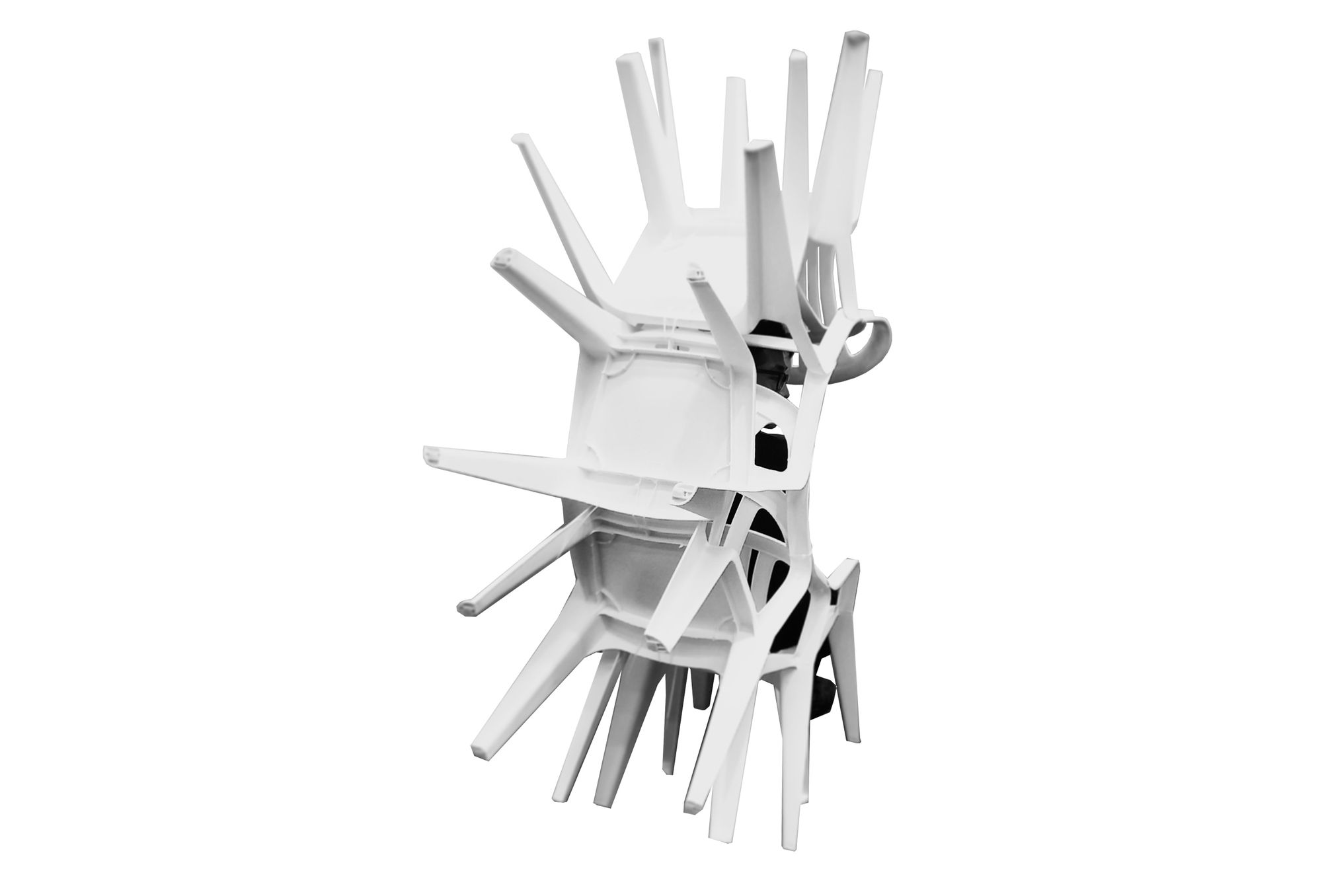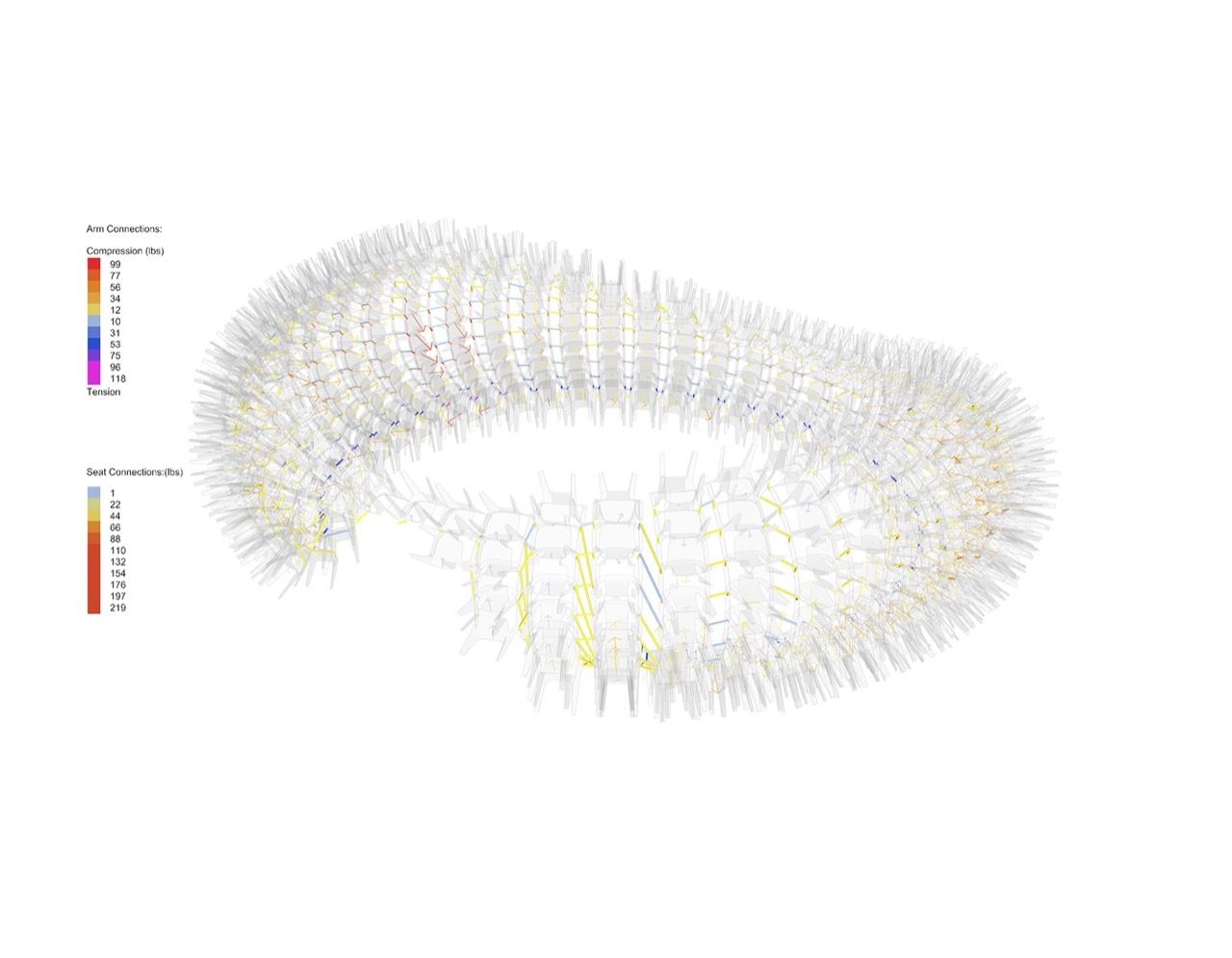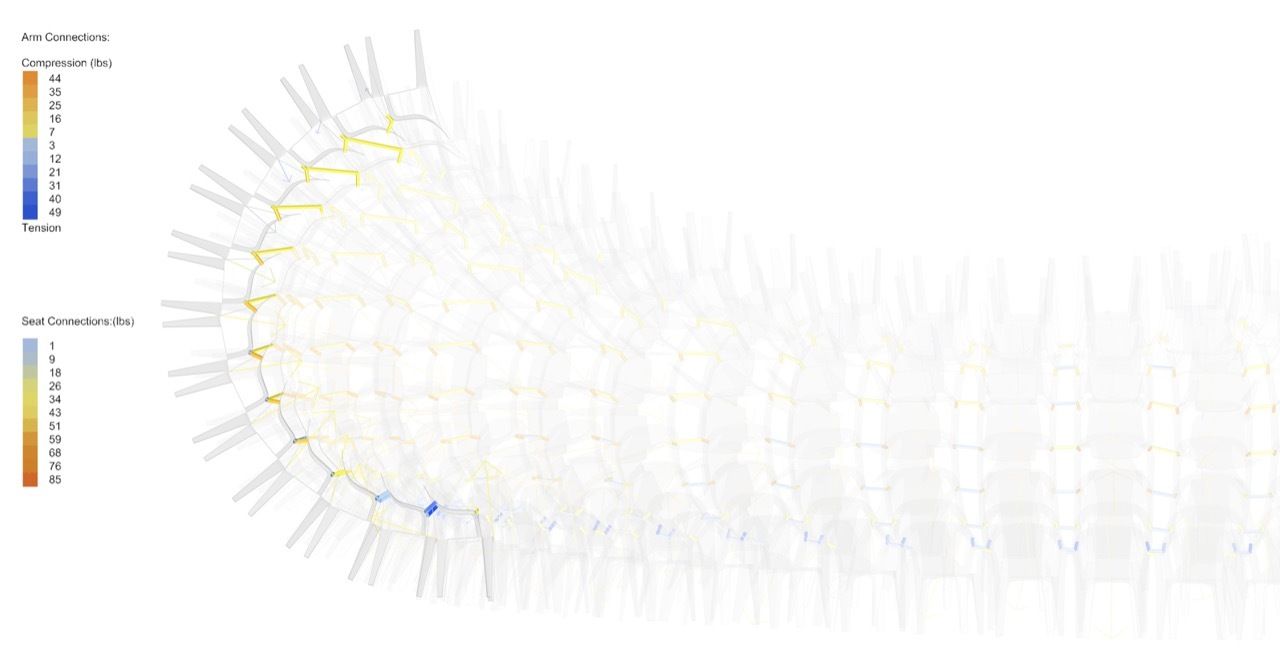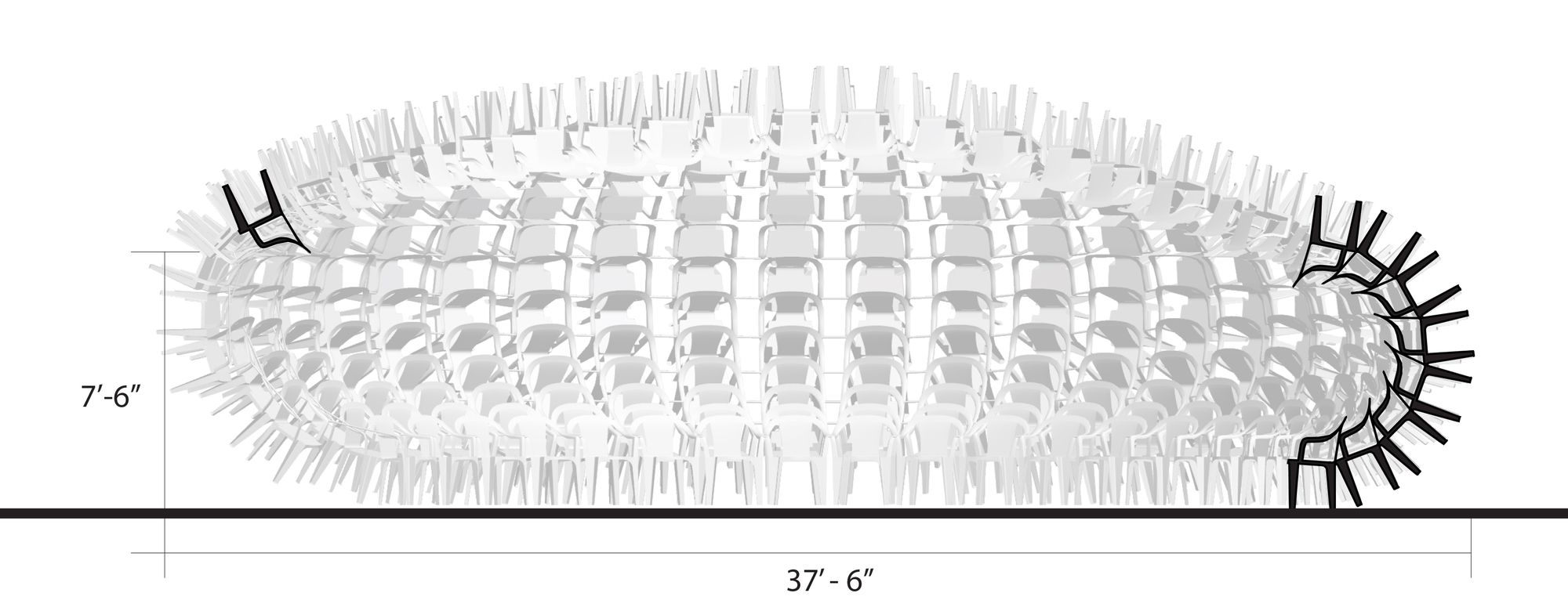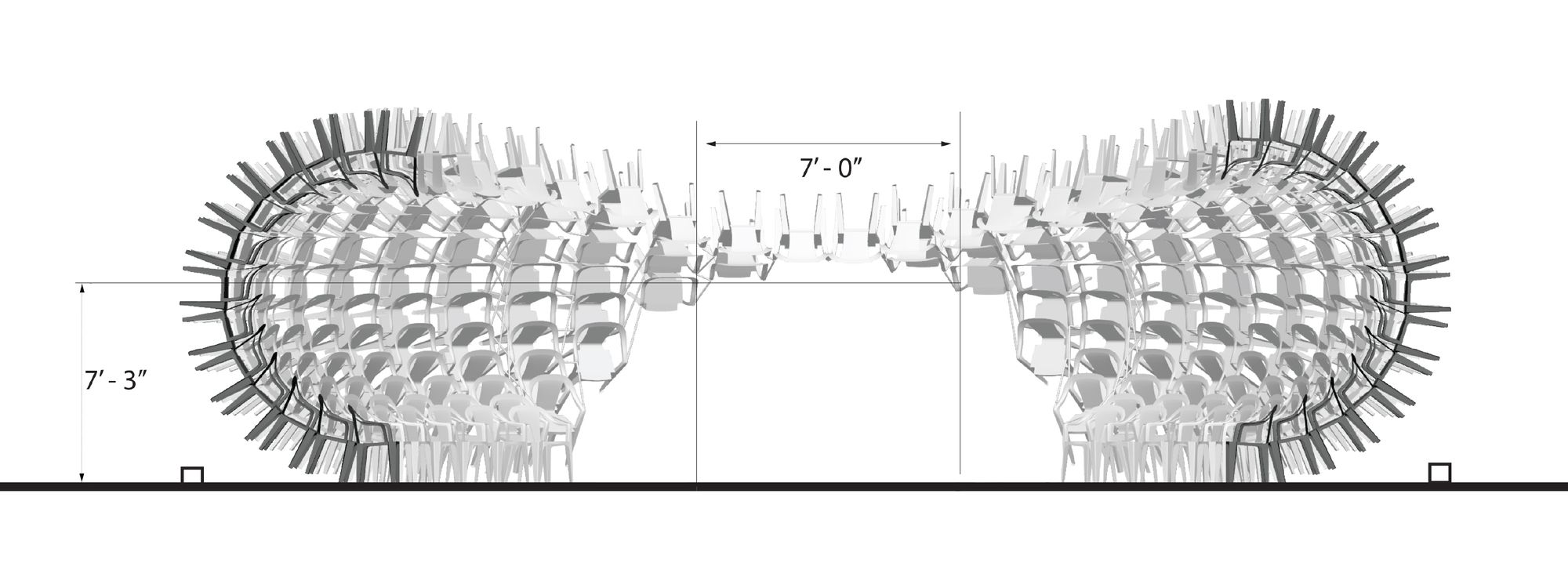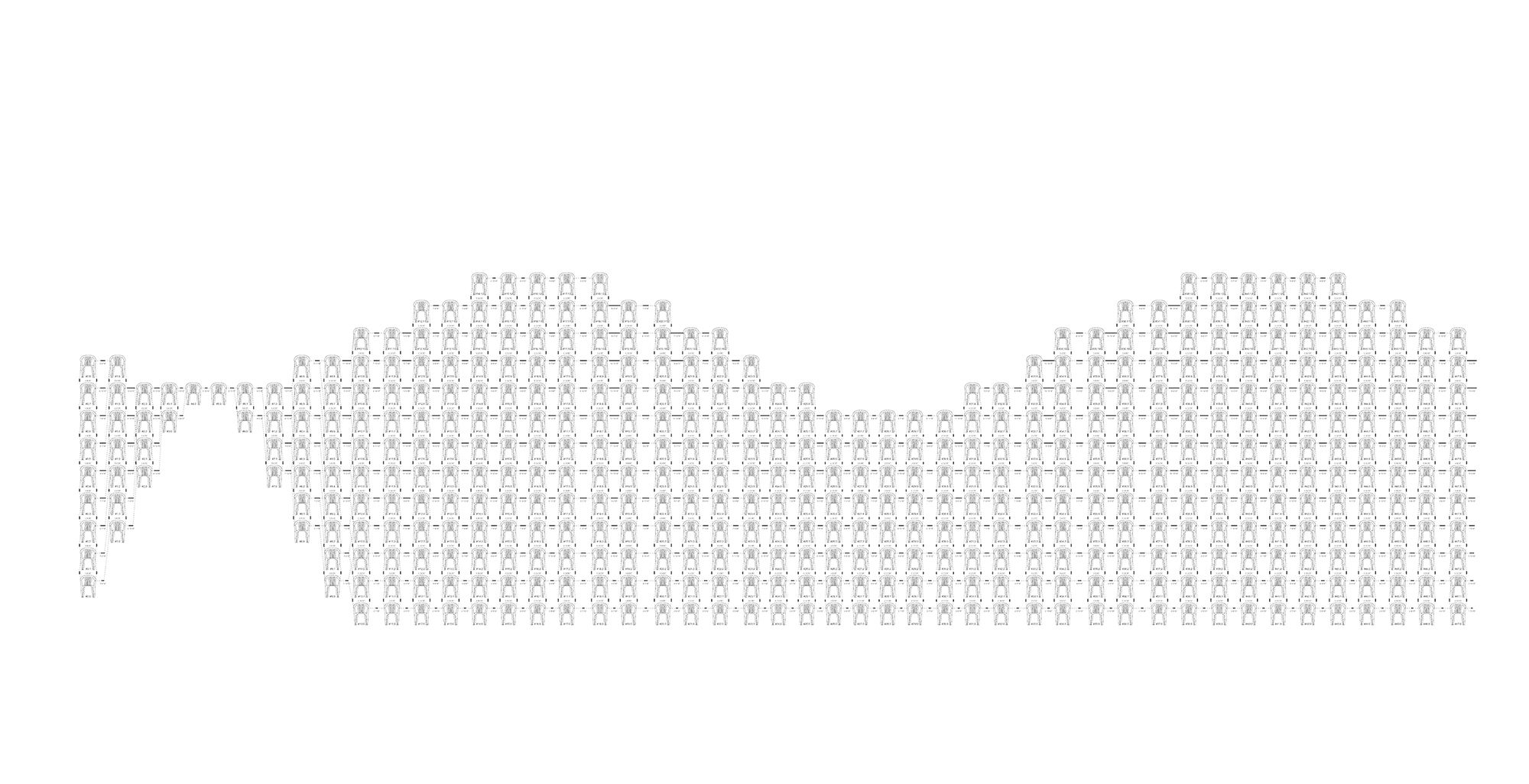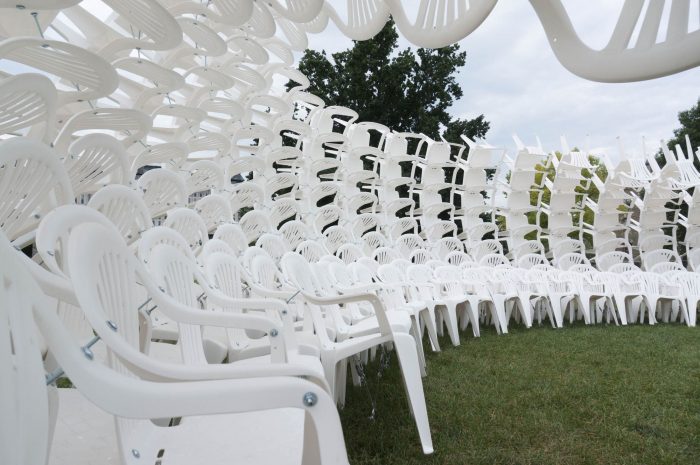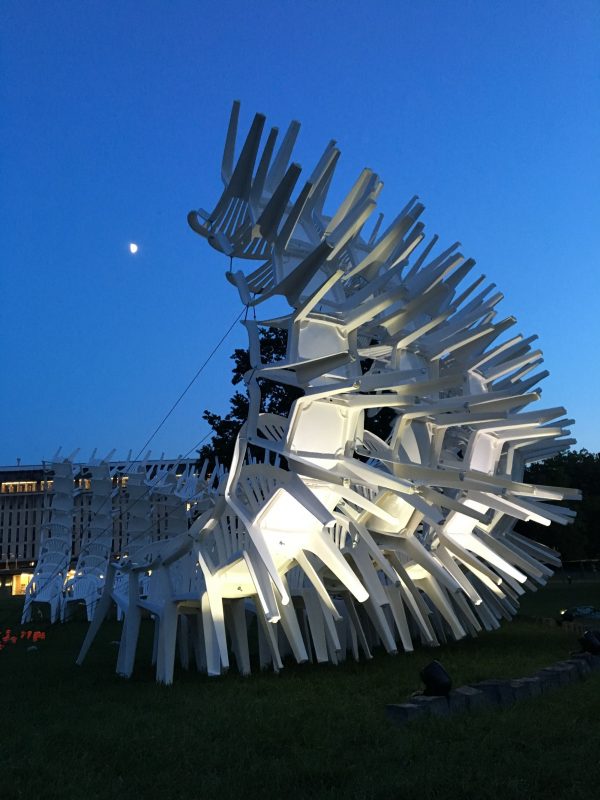Built from 500 borrowed plastic chairs, Urchin aims to question the role of the everyday object: from the typical use that ‘affords’ sitting to an aggregation that becomes skin-like: the object’s features are no longer understood in terms of their use (legs, arms, seat) but in terms of their form (spikes, curves, voids) as, due to their rotation away from the ground, they lose their relationship with the human body.
Dipping down in response to the statue of AD White, the pavilion allows the seated figure of one of Cornell University’s founders to enter into the (impossible) circus. No chairs were harmed in the production of Urchin, and they will be returned to circulation afterward. Urchin plays with the question of usefulness and uselessness by the manipulation of the simple chair, and consequently our perception of the chair and the connection between our bodies, the chair’s components, and their orientations. The question of use as a primary perceptual phenomenon is a product of James J. Gibson’s Theory of Affordances in his Ecological Approach to Visual Perception. The project aims to provoke the questioning of usefulness and perception from the scale of the individual chair unit to the scale of the pavilion.
From the scale of the city to the detail, CODA designs unique, site-responsive, and sustainable solutions that balance function and desire. Our award-winning work is known for its use of an innovative material palette, as well as for our commitment to a dynamic interaction between the architecture and its inhabitants over time. Since 2008, CODA has designed clever solutions for a range of programs, from art installations to houses, from religious and public buildings to housing, and from furniture to entire city design. Despite this range, all of the projects have a specific approach in common: a serious investigation of the programmatic needs of the user at the same time as expanded analysis of what the site has to offer, including materials, energy, artisanal techniques, etc. This approach leads to solutions that are at once novel and sustainable. Our designs are often not one thing but exist in different states in response to different seasons or programs.
CODA has in-house expertise in both urban design, master planning, building design, and product design. CODA also collaborates with a variety of artists, fabricators, landscape designers, and engineers.
Project Info:
Architects: CODA
Location: Ithaca, NY, USA, United States
Architect in Charge: CODA
Area: 1260.0 ft2
Project Year: 2016
Photographs: Joe Wilensky, John Lai, Courtesy of CODA
Manufacturers: Adams Manufacturing
Collaborators: Caroline O’Donnell / Chris Morse / John Lai / Juan Carlos Artologaza, with thanks to Basak Akman / Zahid Alibhai / Kun Bi / Emma Boudreau / Isabel Branas / Mwanzaa Brown / Sarah Bujnowski / Kun Chen / Stephen Clond / Jacob Cohen / George DiStefano / Gary Esposito / Aurelie Frolet / Ramses Gonzalez / Yue (Lancer) Gu / Jose Ibarra / Ellie Krause / Mark Leskovec / Mark Yu-Chen Lien / Lauren Lochry / Lingzhe Lu / Xiaoxue (Iris) Ma / Alexandre Mecattaf/ Jamie Mitchell / Brad Nathanson / Sophie Nichols / Travis Nissen / Ye Chen (Daniel) Park / Leroy Patterson / Max Piersol / Zelmira Rizo-Patron / Alireza Shojakhani / Alex Terry / Haoran (Henry) Wang / Derek Yi / Linjun Yu / Maggie Zou
Special Thanks to: Martin Fields Miller / Cornell Architecture Department / Cornell College of Architecture, Art, and Planning / The Home Depot
